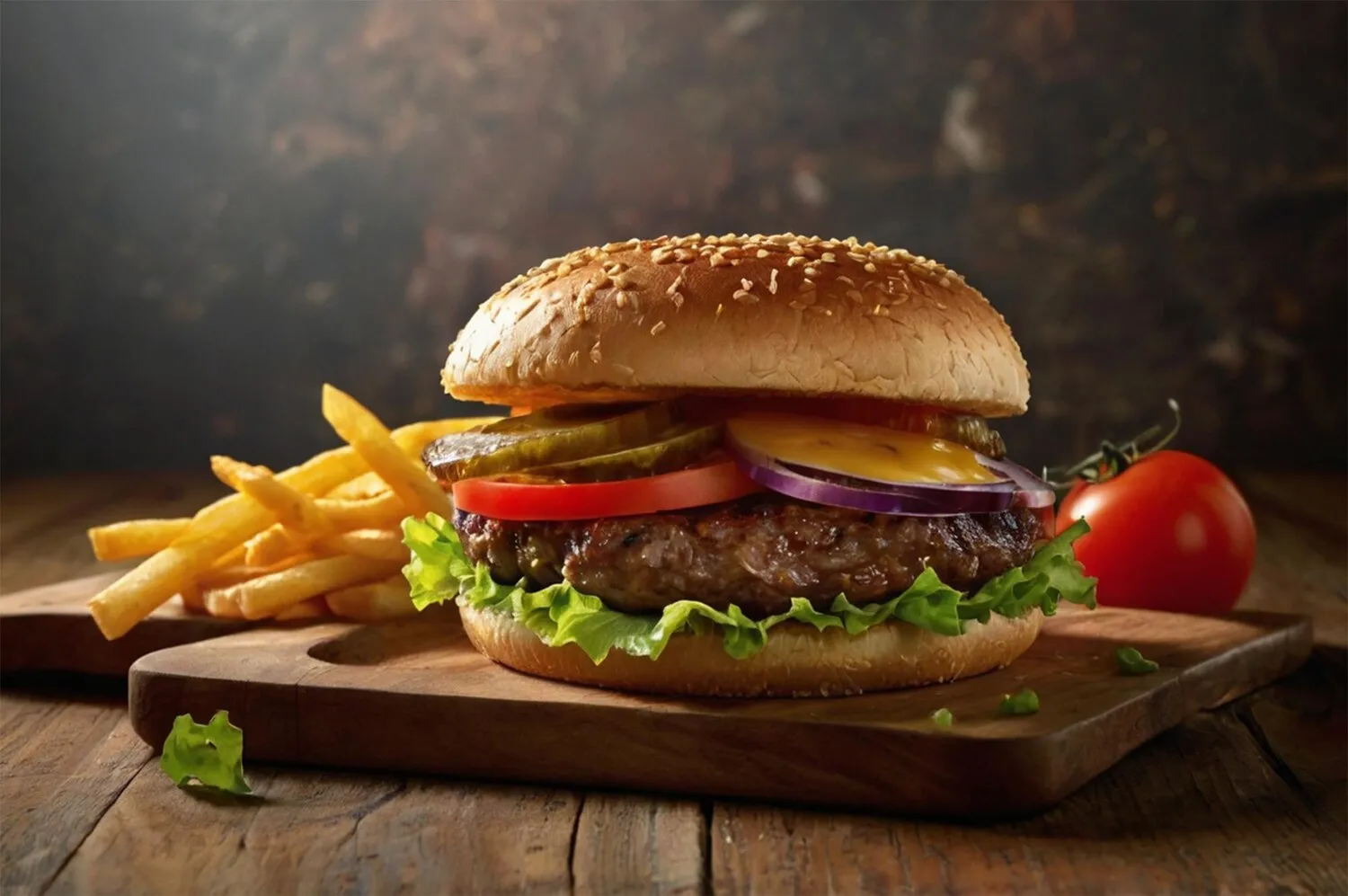
Hamburger
A popular choice, often mentioned in online reviews. Exact details regarding the specific type of hamburger vary depending on the source and potentially the menu's current offerings, but it is a frequently ordered item.
Nutrition Facts
* The % Daily Value (DV) tells you how much a nutrient in a serving of food contributes to a daily diet. 2,000 calories a day is used for general nutrition advice.
The hamburger's origins are debated, but it's generally accepted to have evolved from German Hamburg steak, brought to the United States by immigrants in the 19th century. Early versions were simply ground beef patties. The concept of serving it between two buns gained popularity in the early 20th century, with various claims to its invention at different locales.
The hamburger has become an iconic symbol of American cuisine and culture, representing fast food, casual dining, and backyard barbecues.
Fast Food Staple
Hamburgers are a cornerstone of the fast-food industry, readily available and affordable, making them a quick and convenient meal option.
Barbecue Culture
Hamburgers are a popular choice for backyard barbecues and gatherings, allowing for customization and shared enjoyment.
Regional Variations
Different regions and restaurants have developed unique variations of the hamburger, reflecting local tastes and ingredients. Examples include the Juicy Lucy from Minnesota and the green chile cheeseburger from New Mexico.
Culinary Innovation
The hamburger serves as a canvas for culinary creativity, with chefs experimenting with gourmet ingredients, unique toppings, and innovative cooking techniques to elevate the humble burger.
The hamburger is characterized by savory, umami-rich flavors, often enhanced by complementary ingredients and cooking methods.
The primary flavor comes from the ground beef itself, with fat content playing a crucial role in juiciness and taste. Grilling or pan-frying imparts a Maillard reaction, creating browned, caramelized notes. Common additions like cheese contribute salty and creamy elements. Toppings such as lettuce, tomato, and onion offer freshness and textural contrast. Condiments like ketchup, mustard, and mayonnaise add sweetness, tanginess, and richness, respectively. Pickles provide a sour and crunchy counterpoint.
Choose the Right Meat
Select ground beef with a good fat content (around 80/20) for optimal flavor and juiciness. Ground chuck is a popular and reliable choice.
Don't Overwork the Meat
Gently form the patties without over-compacting the meat, which can result in a tough burger.
Season Generously
Season the patties liberally with salt and pepper before cooking. Consider adding other spices like garlic powder or onion powder for extra flavor.
Sear for Flavor
Cook the burgers over high heat to achieve a good sear and develop a flavorful crust. Don't flip them too often – let them cook for a few minutes on each side before flipping.
Toast the Buns
Toasting the buns adds texture and prevents them from becoming soggy. Buttering the buns before toasting enhances the flavor.
Explore additional Burger dishes and restaurants
Explore BurgerDiscover top dining spots and culinary experiences in Sassari.
Explore SassariLearn more about the food culture, restaurant scene, and culinary heritage of Italy.
Explore Italy